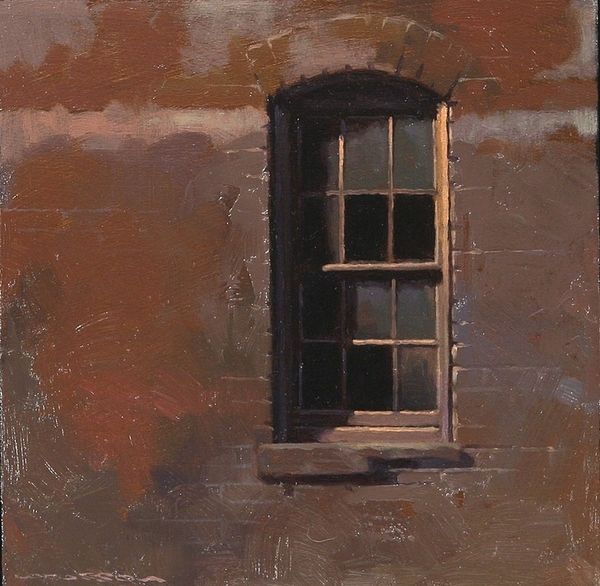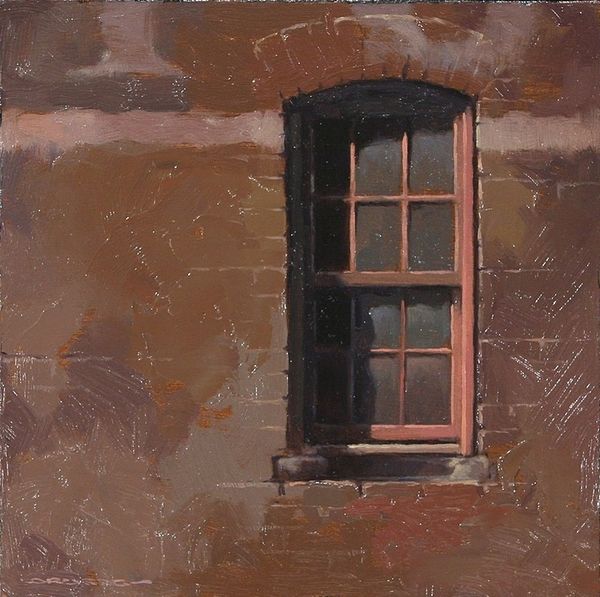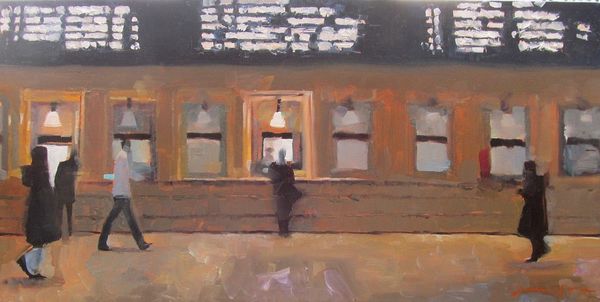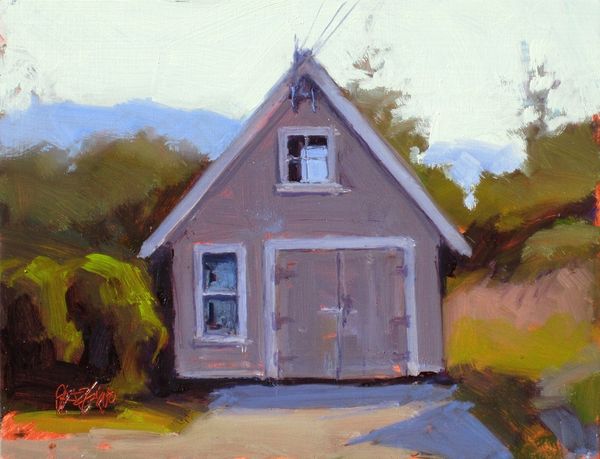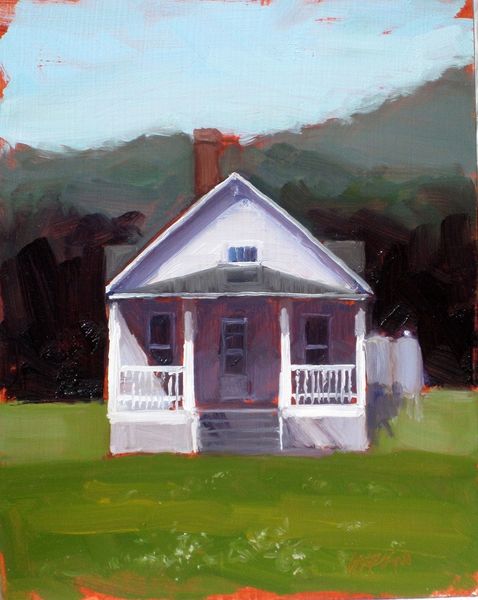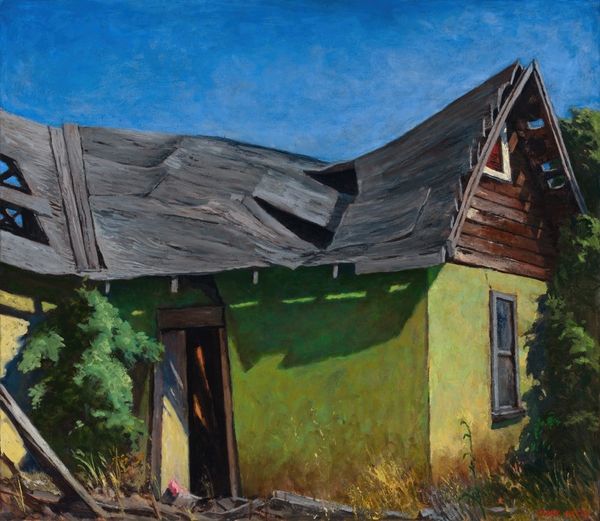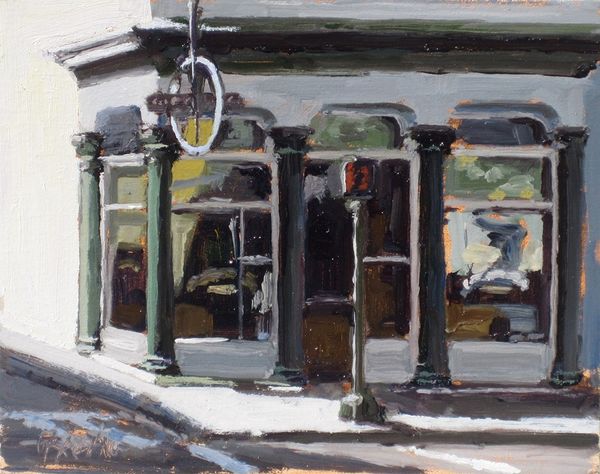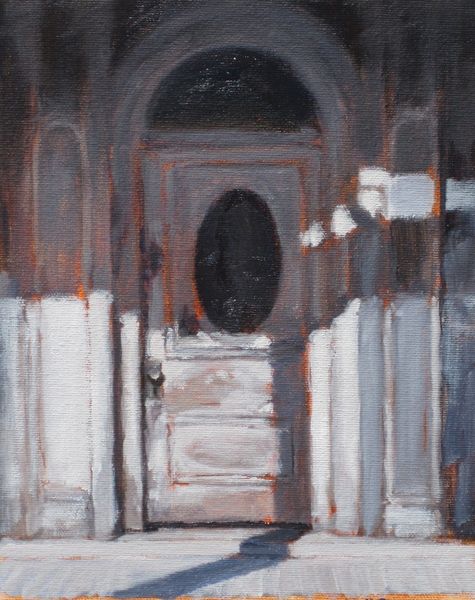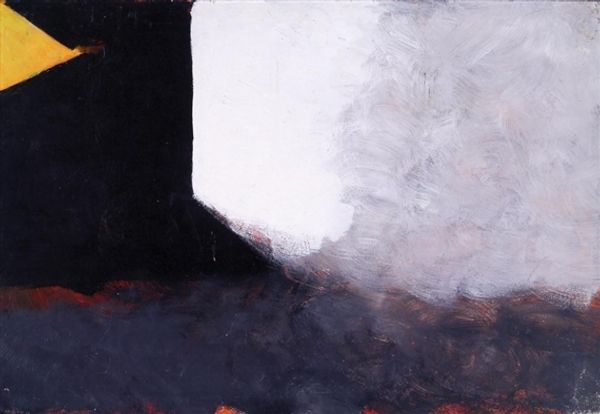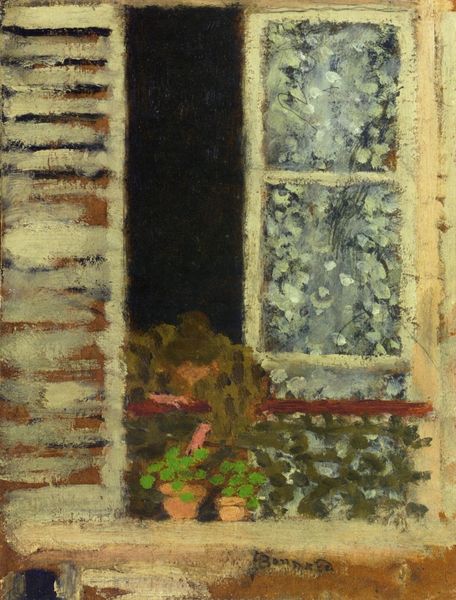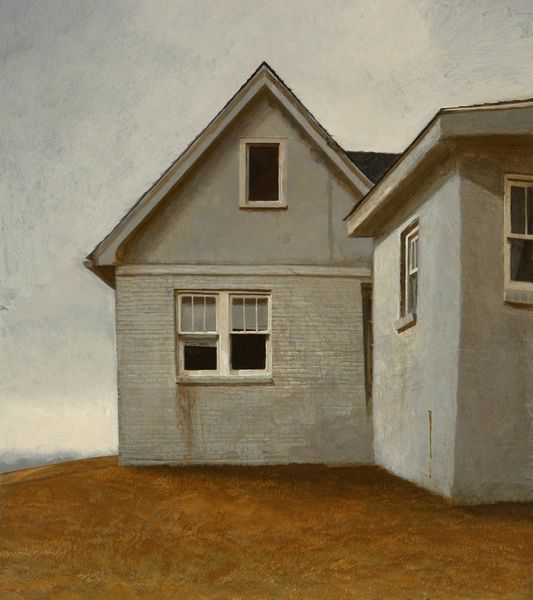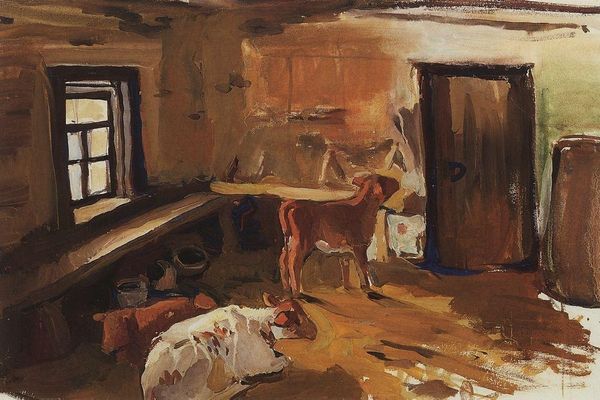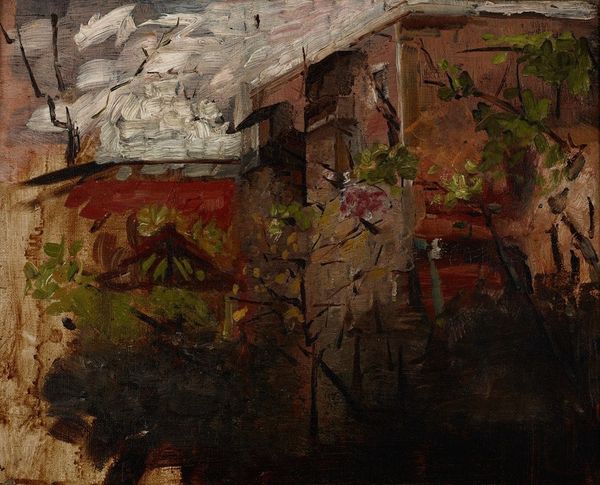
painting, oil-paint
#
abstract painting
#
painting
#
impressionism
#
oil-paint
#
landscape
#
oil painting
#
expressionism
#
expressionist
#
realism
Copyright: Modern Artists: Artvee
Curator: We’re looking at "Damaged," an oil painting by Dan Graziano. Editor: My first impression is of bleakness—a derelict building bathed in stark light and shadow. The broken window amplifies that feeling of abandonment. Curator: Precisely. Consider the societal narratives embedded within the imagery of decay. This window isn’t just broken; it speaks to a breakdown of systems, of neglect, and potentially of disenfranchisement. We can think about who might have lived here, what circumstances led to this disrepair, and how such environments perpetuate cycles of marginalization. Editor: While I recognize the social implications, I am struck by Graziano’s use of impasto. The thick, textured brushstrokes create a tangible sense of deterioration. The broken glass, rendered in sharp whites against the dark interior, forms a compelling focal point. It's almost a study in contrasts: light versus dark, absence versus presence. Curator: And that contrast underscores the social inequalities present in our built environments. Who benefits from the erasure or neglect of these spaces? The interplay of light and shadow serves not only an aesthetic purpose, but also reveals hidden realities. Consider the work of Lefebvre on the production of space; this isn't just a neutral scene, it's a site of power relations. Editor: I can see that interpretation. Yet, purely from a compositional standpoint, the way Graziano frames the window creates an almost abstract pattern. The geometry of the shattered glass, juxtaposed with the rigid frame, offers a compelling visual structure independent of its symbolic weight. Curator: But can we truly divorce form from content? Formal elements always exist within a context. Even the act of choosing this specific subject—a damaged building—is a political act. It brings into focus the spaces we often choose to ignore or forget. Editor: Perhaps. Ultimately, though, I'm left appreciating how the artist transformed what might be considered mundane or ugly into something captivating, through skillful manipulation of paint and light. Curator: I agree. The painting encourages us to examine not only our aesthetic preferences but also the underlying social and political landscapes that shape our world. It reminds us of the stories hidden in plain sight, and of our responsibility to engage with them.
Comments
No comments
Be the first to comment and join the conversation on the ultimate creative platform.
